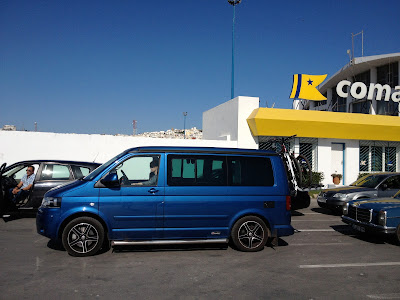Life has been so busy recently there's been no time to blog. A much needed escape to the seaside, relaxing at Cutcloy Cottage is just the ticket this weekend. Breathing space to savor the peace and quiet and feel like the world has stopped turning, just for a few precious days. Time to read, eat, chat and snooze away the hours. Planning another adventure.
I usually read more than one book at a time, so in addition to reading Tom Holland's 'In the Shadow of the Sword', I'm currently enthralled by Tahir Shah's latest novel Timbuctoo. Which reminds me of how the whole Moroccan adventure began...
Once upon a time, while browsing in Borders bookshop (RIP - you are missed), the exotic cover design of this book caught Laura's eye. She picked it up and read...
"Morocco is an Arab land steeped in history, a kingdom of rich
textures, aromatic spices, and magical belief, set on a canvas of
vibrant cultural color. Nudged up in the north-west corner of Africa, it
is the bridge between Orient and Occident, separated from Europe by
only eight miles of water.
Arriving in Morocco can be like stepping into the world of A Thousand
and One Nights. It’s a land ruled by ancient codes of honor, duty,
chivalry and respect. These values are passed down now from mother to
daughter, from father to son, as they have been for centuries. They are
an ancestral birthright inherited through a system once well-known in
the West, but long since calcified.
IN ARABIAN NIGHTS looks at Morocco in a way the
kingdom has never been presented before, observing it from the inside
out, through its ancient use of stories as a teaching tool.
At the same time, Tahir unravels his family’s preoccupation with this
secret matrix, and learns how the West can once again benefit from
inner knowledge contained within tales we belittle or take for granted
every day."
No deliberation was necessary, the purchase was made and the book read with gusto. Upon finishing Laura declared..."I must go to Morocco!" Within days the flights were booked and it wasn't long before we set off for southern Morocco, to Marrakech and the High Atlas mountains...the adventure had begun. In time another Tahir Shah book was purchased and read: The Caliphis House. Tahir's story of moving from London to Morocco and the challenges of dealing with locals, both human and supernatural, in his attempts to restore an old house in a shanty town in Casablanca.
Suitably inspired and undeterred, the search for, discovery and eventual restoration of Riad Romm'an began...
Time passed...
And the annual trip to the Wigtown book festival in south west Scotland, "One of the best autumn festivals in the world" - The Telegraph; "The kind of festival people feel possessive about" - The Guardian). Who should be there this year, but Tahir Shah, who had come all the way to a rather chilly and wet Scotland from his home in Casablanca to talk about self publishing and his new book Timbuctoo. We got chatting.
"When are you back in Marrakech?" asked Tahir.
"In two weeks time" we said.
"I will come visit you" enthused Tahir.
Much to our surprise, our new friend did! And a wonderful and interesting afternoon was spent talking about Morocco and its people with Tahir and his children at Riad Romm'an.
 |





















































